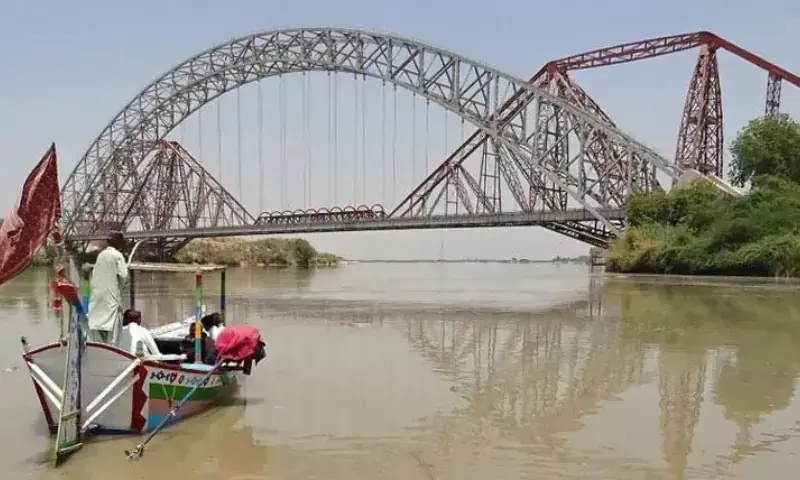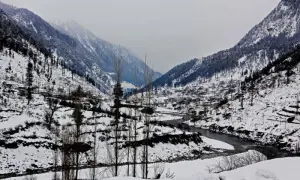Floodwaters head towards Sindh, next 24 hours ‘critical’, officials warn
Floodwaters from the north are now moving towards Sindh, putting Guddu and Sukkur barrages on high alert.
Officials have warned of a possible high flood level in the next 24 hours.
Sukkur Barrage focal person Abdul Aziz Soomro, speaking to Aaj News, said the situation is “extremely critical” with the next day expected to determine the scale of the threat.
According to the barrage administration, as much as 700,000 cusecs of water could pass through Sukkur and Guddu.
Residents of kutcha (riverine) and low-lying areas have been asked to immediately shift to safer locations.
Authorities said teams are monitoring the river round-the-clock and urged people not to ignore evacuation warnings.
The Sindh Information Department released updated statistics showing alarming water levels across rivers and barrages in the province as floodwaters continue to move downstream. According to the department, Panjnad recorded an inflow and outflow of 664,422 cusecs.
At Guddu Barrage, the inflow was 537,220 cusecs against an outflow of 505,392 cusecs, while Sukkur Barrage registered an inflow of 460,490 cusecs with an outflow of 422,400 cusecs.
Meanwhile, the Sindh Rain and Flood Emergency Monitoring Cell reported that Kotri Barrage saw an inflow of 261,234 cusecs and an outflow of 254,354 cusecs.
Flooding in Naushahro Feroze
Earlier, the rising floods water level in the Indus River has triggered severe flooding in Naushahro Feroze, submerging multiple settlements and forcing residents to migrate on their own.
According to the Irrigation Department, around 300,000 cusecs of water were passing through the district.
The flood situation also persists in Kashmore, where water levels at Panjnad have reached 665,576 cusecs, while upstream flow at Guddu Barrage has climbed to 512,662 cusecs.
In Punjab, flooding along the Sutlej, Ravi and Chenab rivers continues to cause widespread devastation. While water has receded from several northern districts including Sialkot, Lahore, Gujranwala, Faislabad, Wazirabad, Sheikhupura and Kasur.
Much of the southern Punjab remains submerged. Multan, Vehari, Muzaffargarh, Rajanpur, Lodhran, Layyah, Khanewal, Bahawalpur and Bahawalnagar are among the hardest hit areas, with thousands displaced to relief camps where food and shelter are being provided.
In Multan, floodwaters have begun to recede easing pressure on protective embankments. However, a 100 foot crack on the Shujaabad River Chenab bund has inundated nearby settlements, forcing mass migration.
Over 100 villages remain under water. In Muzaffargarh, the water levels of Chenab has declined for a second day, while the Sutlej, Ravi and Chenab continues leaving people stranded in villages such as Azmatpur, Bet Malanwali and Chowki Gabol where shortages of food and water persist amid slow rescue operations.
According to a damage report issued by PDMA Punjab more than 4,500 villages have been affected and 97 people have lost their lives. Nearly 4.5 million people were impacted with over 2.4 million evacuated to safer locations.
Authorities have established 369 relief camps, 490 medical facilities and 405 veterinary centers for livestock treatment.
Reservoir levels remain near capacity: Mangla Dam is 93% full, Tarbela is at 100%, India’s Barkha Dam on Sutlej is 88% full, Pong is at 94% and Thein stands at 89%.
For the latest news, follow us on Twitter @Aaj_Urdu. We are also on Facebook, Instagram and YouTube.

















Comments are closed on this story.